
Stories in this episode: Adam is all set for a safe career in engineering when a chance encounter leads him to embrace his true creative calling as an animator; When faced with upheaval and contention in her community, peace-loving Bryn finds solace in repentance and a prompting to fold 1,000 origami cranes.
Show Notes
Adam, the master animator, and his wife:

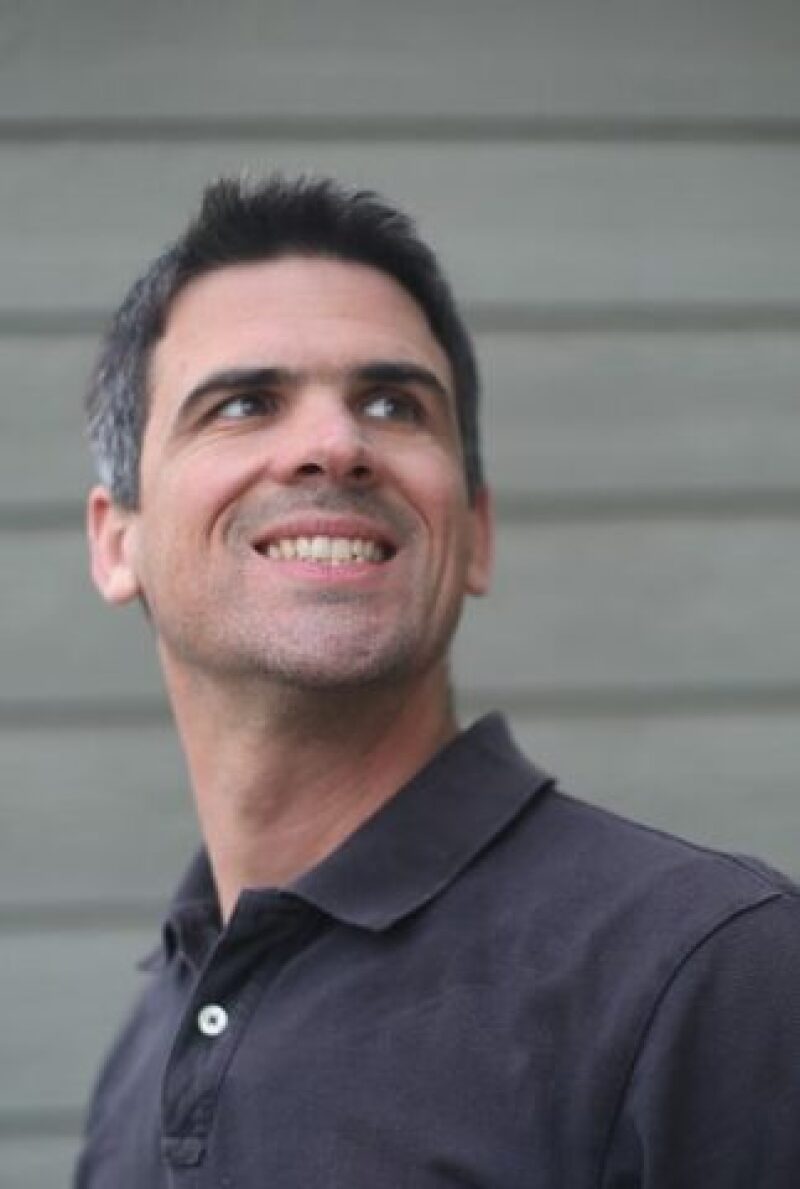
Sadly, Adam no longer has the video of the blue lemmings that got him his first job, (he says it's probably on VHS somewhere!) but animating the lemmings was part of working on a student film, here is the finished product: vimeo.com
Check out Adam's "About" page to learn a little more about him and all of his creative endeavors: evertaster.com.
The website for Adam's animation studio: futurehousestudios.com

The sculpture piece in Salt Lake City titled "Serve and Protect," by Greg Ragland had red paint spilled over them during the riots of summer 2020. As part of Bryn's journey to find and create peace, she folded 1,000 peace cranes with friends and family and placed them in the sculpture.

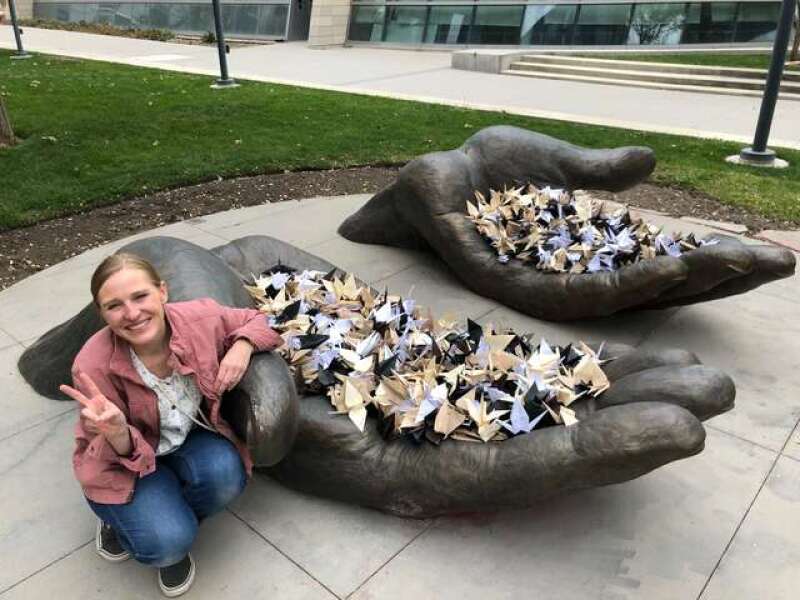

Close-ups of the cranes that Bryn made with friends and family to symbolize peace:
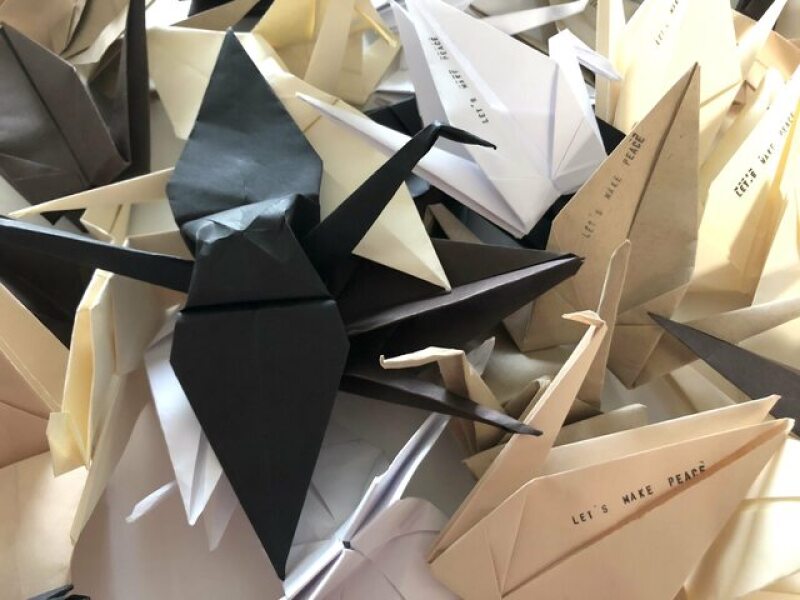
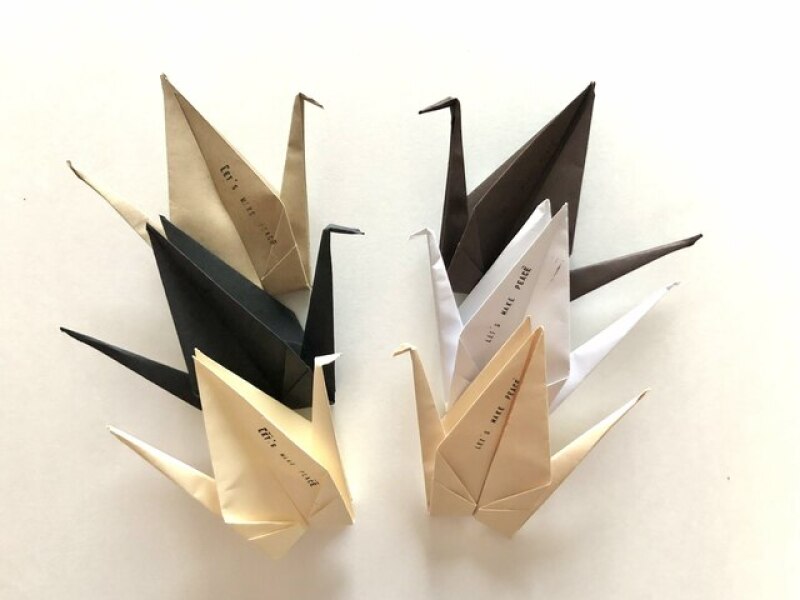

Read about the origins of the peace crane tradition here: One Thousand Origami Cranes
See Bryn's website and campaign to make peace here: letsmakepeace.org.
Bryn offers different resources on her website, including stencils, coloring pages, origami folding instructions and lesson plans. The most recent addition is a Christmas Peace-making devotional kit, download it here.
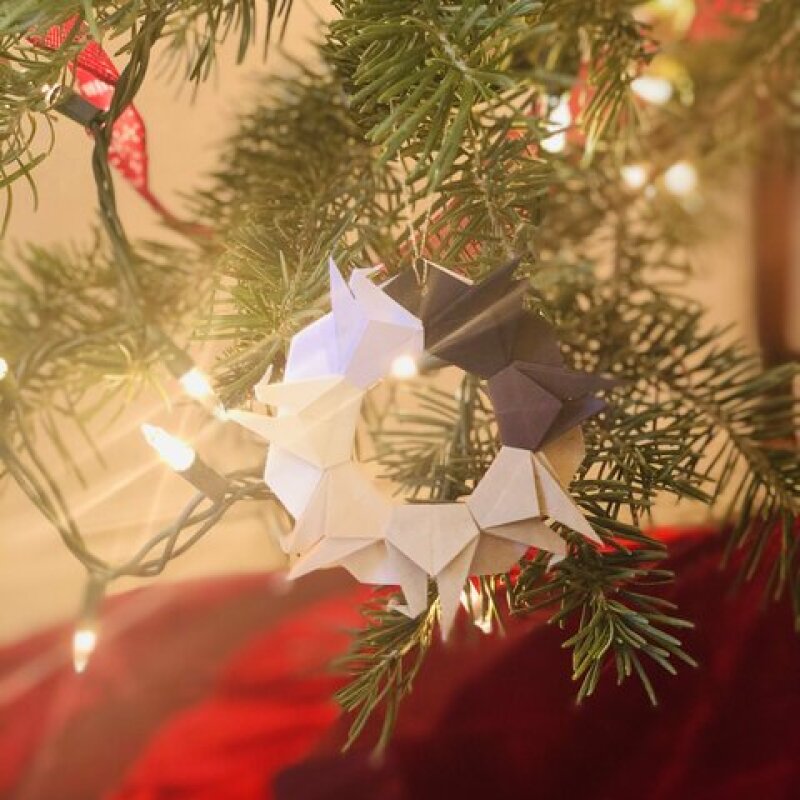
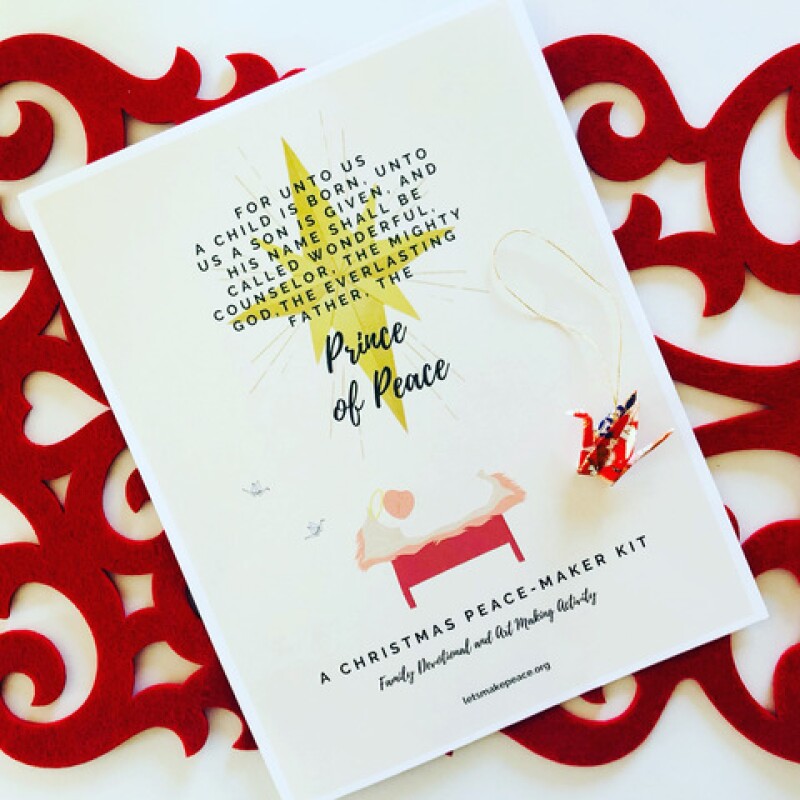
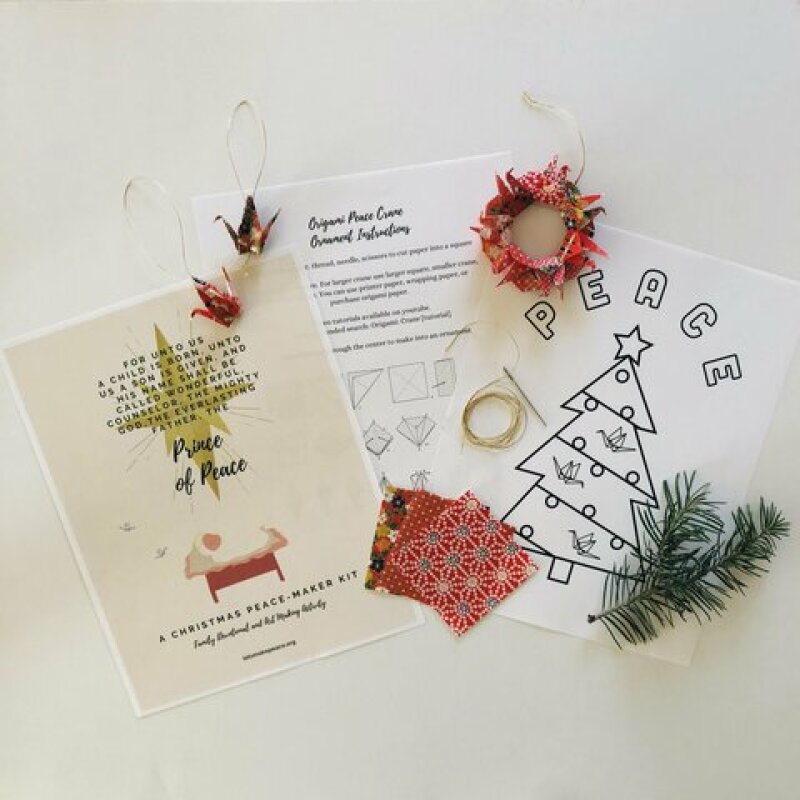
Elder Dieter F. Uchtdorf Quote: "Creation brings deep satisfaction and fulfillment. We develop ourselves and others when we take unorganized matter into our hands and mold it into something of beauty. . . The more you trust and rely upon the Spirit, the greater your capacity to create. That is your opportunity in this life and your destiny in the life to come" (Elder Dieter F. Uchtdorf, "Happiness, Your Heritage," October 2008 general conference).
KaRyn 0:03
Welcome to "This Is the Gospel," an LDS Living podcast where we feature real stories from real people who are practicing and living their faith every day. I'm your host, KaRyn Lay.
You're gonna have to be a little bit patient with me this week as I geek out over our theme. You know how some people have seen every episode of "Star Trek" and they love it so much that they collect "Star Trek" Christmas tree ornaments and own a dictionary of Klingon phrases? (Is that not a thing? Just something my dad does?) Whatever that thing is that you love as much as a Trekkie loves "Star Trek," that's how I feel about the pursuit of a creative life.
I've read like a million how-to books. I collect quotes about the value and purpose of creativity. And when I can't even make time to do my dishes, I make time and space for my creative hobbies and making things. More importantly, when I think about what makes me feel the very most like who I was always meant to be in this life, the thing that comes to mind is the practice of creativity. And it's not just art, or poetry, or music, or even whipping up a really great chocolate babka a la the Great British Bake Off.
I firmly believe that the pursuit of that creative life is the pursuit of a spiritually connected life. I mean, think about it, as disciples of Jesus Christ, who are practicing to be more and more like Him, the creator of universes and the author of salvation, we are actively and regularly engaged in efforts to create. Deeper relationships, light, connection to heaven, binding covenants, every part of who we are as children of our Heavenly Father requires an amount of creativity.
And we have two stories for you about the way the practice of creativity and that nurturing of our divine creative spark can open up worlds of possibility and power for the forward movement of God's work here on the earth.
Our first story comes from Adam an illustrator who accidentally discovered his passion for creativity when he decided to think outside the box at school. Here's Adam.
Adam 2:03
In 1999, I had the pivotal moment in my life where I had to decide what classes I was going to take fall semester. And so I was sitting there, looking through a newsprint catalog of classes, trying to decide what major I would become when I returned to BYU and therefore determine the course of my entire life and career.
And so as I dialed up on the touchtone phone, I looked over the classes and I said, "Hmm, this one's interesting, something called 'industrial design.'" But I chose the safe route. I was going to be an engineer. And so I signed up for all those classes. And at the end of the summer, when I returned to BYU two weeks after my mission, I started in the mechanical engineering program.
It was a safe bet. That's what good members of the church did, like they had safe and sensible careers. And that seemed like what I was supposed to do. So in that first week, back at BYU, I was fresh, home from my mission, the sky was the limit.
And I had a bit of a moment where I took the time to explore some options. And I looked into this industrial design major, I thought, okay, let me just check this out. And I went through the classes and went through a tour.
And there were three divisions in the industrial design major. There was a automotive design, which I thought was really cool, I always used to draw cars. Product design, where you design shoes and toasters and things. And then I found this strange little division that was so obscure and didn't quite fit, which was called digital design.
And I was told that there was a computer lab going on with one of the professor's teaching. His name was Brent Adams. And he had started this portion of industrial design called digital design. And I walked in and I saw him using a software package called Maya and he was rotating a sphere up on the big screen. And I thought, "This is it. This is what I want to do for a living. And this is your chance, Adam Sidwell, to make velociraptors and dinosaurs for a living."
I signed up for the major. I got so excited about this. This was what I wanted to do. And I left engineering behind and I didn't look back for one second.
There were no teachers besides Brent Adams, so what that meant is that we took a lot of illustration classes, and then we'd have this one big long class that was about three to four hours, three times a week, where we would sit in the class and just learn hands on how to use this software and how to dive into animation. And it was hard. And especially in a world where the internet had hardly any content on it.
And, you know, I was the best artist in high school. My art teachers loved me. But for the first time in my life, I was with artists who were way more talented than I was. And I would put my work up against theirs, and it just paled in comparison. And had my art looked at and somebody would say, "This isn't good." "This is the problem here, here and here."
And I had many, many moments of doubt of if this was something I could do. And I just wasn't sure if I was learning enough. Because we never had known anyone who had actually graduated from BYU, and gotten a job working in the movie industry. The chances of making it in a creative career are really, really slim in a lot of those careers, because you're up against a lot of competition, and some of it is just pure luck.
There was a lot of prayer involved, there was a lot of soul searching, and usually not about "if," but "how." And my antidote to the discouragement and to the feelings of "Wow, this is really hard," – my antidote to that and my answer was, more work. Work harder.
And I remember spending five hour chunks of time in the laboratory. And in the Snell building at BYU was locked away in a room without windows, a computer lab. And they would close the doors to the Snell building at 10pm at night. But that was – for us – the time when we were just getting started, after having already done our other schoolwork and having already had a computer lab session earlier that day.
And so sometimes, if we had forgotten, or we hadn't made it in time to the doors being closed, there was a second story window, that if you climbed up a pillar, and someone gave you a boost, you could heave yourself onto a ledge and shimmy through a window – that was just about as wide as I was – into another computer lab classroom.
Which, funnily enough, was often occupied at 10pm, and then suddenly, a couple of animation majors would come plopping through a second story window, much to the surprise of the professor or students who were then engaged in the class. And we'd walk through nonchalantly waving "Hello" and moving over to our computer lab so that we could get more work done.
It was nights like that where I often found myself emerging as the sun was coming up, having worked all night, and walking back home to catch a few hours of sleep – or a few minutes of sleep – before my next day of classes started.
And I remember just feeling incredibly happy because of the work that I was doing.
There's something remarkable about having an idea, that goes something like this: "Wouldn't it be amazing if –?" and then you go through a process of sketching it, then modeling it and putting it into computer software, and rendering it until you have something that you can put up on your screen, and you can look at and go "Woh."
And as I dove further and further into computer graphics and animation, and I learned the math and the physics – I got this feeling that we were trying to recreate on screen, the process of creation.
We have to study and understand that there is math and equations behind how water flows. We have to understand, you know, how the anatomy of a human being helps us to move the way that we do. We have to examine the physics and the math behind how light bounces off of surfaces and reacts such that the colors come to our eye and we see things like glass and water. And we get a little glimpse into how God created the world.
And I think God wants us to create because that is the divine mission of all of us. We create life. we are destined to become like Him and be co-creators and heirs to all the He has, and to create worlds to come.
And so I didn't know how everything would turn out. But I hoped. And even if I didn't find success in what I'm doing, there was joy in the creation, and the building of a skill that I knew I could take with me into the next life.
And so here I am in year five at BYU, most of my friends from high school had long since graduated and started their careers. And I was starting to become what felt like to the outside world an old guy in college. As were many of the other animation majors with me.
And I came home one day to find that there was something written on the whiteboard by one of my roommates in the living room, and it said, "Pixar called." With a return phone number. And I thought this must be the biggest joke that they were playing on me.
Because I had sent off a little VHS tape with a couple of blue lemmings with – that didn't even have eyeballs bouncing around on a screen that I had created this crowd simulation algorithm and sent off this VHS.
And it turns out that that was a real phone number. And I called and I had what I think was the first interview of a BYU student with Pixar.
And I remember sitting in the basement of my apartment, and I was talking through what I had created with two of the technical leads from Pixar Animation Studios. And this was the coolest moment. And I completely botched the interview.
I tripped all over my words. I didn't know what I was saying. I was too afraid to take credit for my work and be bold in explaining to them the technical aspects of how it worked. And I never got that job.
But I thought for a second, maybe I'm onto something. So I kept working and a few short months later, I showed a similar videotape, with the same lemmings, but this time they walked and they had fur and they had eyeballs and they had very cool animation.
I showed it to the movie studio that did visual effects and animation called Digital Domain. And right there on the phone call – this was a few days after I graduated and I was still in my apartment at BYU – on that phone call I heard the interviewer pause for a second. He said, "Hold on a second" and he covered the phone but I could still hear him and he said, "So do we want to hire this guy?" And they go, "Yeah, let's hire him." And right then and there. They offered me a job.
I was ready to jump in and do it for free. But they'd offered me a year contract. It was an actual paying job, $13.64 an hour. This was the year 2003. And I jumped in my minivan. I drove away from BYU with everything packed up in it. And with the short stop to my counselor and who said, "Yes, you have enough requirements to graduate. You're out of here, buddy."
And 10 days later, I was in Los Angeles seeking my fortune, working on the movie "iRobot."
And since then, animation has taken me all over the world. You know, I got to go work for Peter Jackson for a year in New Zealand, I got to work on some of my favorite films with favorite characters like "Tron" and "Transformers" and "Ninja Turtles."
I even got to work for Industrial Light and Magic, which is just surrounded by all the coolest Star Wars memorabilia, and I loved it. And it was like this dream that came true. And I came to this moment where I realized that wow, sometimes things do work out. Sometimes our hard work does pay off.
Each creation that we make is part of telling the story. And for me, you know at the root of it all is the fact that I like to tell stories.
In many ways I think of God as the master storyteller and novelist and creator. He knows the end from the beginning. And there are moments of doubt and despair in the characters lives. And we as the characters don't always know how it's going to turn out. And in fact, sometimes it doesn't turn out. Even in this life. But in the end, when it's all said and done, justice will be served. All wrongs will be righted.
There was one moment when a reporter asked President Hinckley, "How is it that you're so optimistic all the time?" and he said, "Because I know how it's all going to turn out."
And to me, that's what's amazing, is God has written the story. And so He knows how it's all going to turn out, and the story is going to have a happy ending.
KaRyn 16:07
That was Adam.
My favorite part of his story might be the moment when he realized that becoming an animator could be his one chance to make a velociraptor. I've never really wished I could make a dinosaur. I guess I've seen the movie "Jurassic Park" one too many times, but I do love the connection that Adam made between our divine creative spark and our entire purpose here on Earth.
Though his story on the surface was about creating art, it was also about the call to create everything. To gather the elements of godliness and shape them into a life of meaning. I mean, we birth children, we build ministries, we craft family cultures that can sustain our faith.
Sometimes we even make little blue lemmings that dance and twist and run when we harness an understanding of physics and computers. It is so cool.
Our next story from Bryn is a little like an exciting puzzle that unfolds as she tells it. Here's Bryn.
Bryn 17:02
In order to understand my story, and why I'm so passionate about peace, it's important to know that I came from a family that endured the excruciating effects of divorce. It was difficult to feel peace in our home because of it, as hard as my parents tried. And I became very determined to create a different type of environment in my own home and with my own children.
So the summer of 2020 was very difficult for me. I'm very sensitive to conflict. And it was just everywhere. It was online, it was in conversations. And the conversations around racism in particular felt really personal to me.
I am a white woman, married to a person of color, and I have biracial children. I met my husband in a very unexpected way. A dear friend of ours set us up. And early on while we were dating, I was just amazed by his light and his ability to love and connect with people in a very genuine way. And as a person that longed for connection, he made me feel loved and safe and important.
And so I quickly fell in love with him, and miraculously, he fell in love with me. But because of my fear of divorce, I was really sensitive to a lot of things that I had heard growing up about what can make a strong marriage.
And I took some of these concerns to the Lord. And I said, "He comes from a developing country. And I just had always heard that it's best to marry someone from your same socioeconomic class. He didn't come from an LDS home, and so I was worried that an interfaith family would be harder. He's a person of color. And I had heard that interracial marriages are harder. The children that I had always dreamt of having my whole life were blond haired and blue eyes. And if I were to have children with him, I thought that my kids wouldn't even look like me."
As I was praying about these concerns, I just had this strong feeling of peace and I remembered this moment of personal revelation where I knew he would be my husband and that it would be okay.
And so I went forward with faith and he is without a doubt the greatest gift of my life. We have four kids, three girls and one baby boy. And they're a beautiful spectrum of color and personality. And they carry so much of their father and so much of me in them.
So as I was observing the events of the summer, and watching the way that people were interacting online, as they were discussing issues of race, it brought to light some realities about myself that I had never considered. I became very aware that list of concerns that I took to the Lord – that they were racist. And I felt a lot of shame. Because my life had become so blessed by my husband, and everything that he is.
I also, for the first time realized that because my children are biracial that they were vulnerable to racism, which is something I had never considered before. I don't know why I just hadn't ever thought about that.
As the protests escalated, I spent a lot of time praying, a lot of time crying. I saw so much suffering, and I saw the problems, and I deeply wanted solutions. But I was too scared to really engage much because I didn't want to make any mistakes. I didn't want to offend anyone.
You know, we all have blind spots. And I know that I have them. I had had racist ideas. In my mind. I didn't even know it. I didn't self-identify that way. And so I just was scared to really engage.
I remember one night, I knelt down, and I don't even think I was able to say anything. I just felt so many things. And I just gave the Lord my heart. I asked him to please help me see it the way that He seems to discern to understand because everything felt so messy, and confusing. And all of the feelings were so heavy. I really wanted to believe that there are solutions, I really wanted to believe that I couldn't be part of it. That I could give him my repentant heart. He could do something with that.
I started having a recurring image in my mind of an origami peace crane. And it was functioning as a sort of prism where a beam of white light entered into the cranes triangular shaped wings and fragmented and then dispersed out the other side in the spectrum of human skin tones from light to dark. And I really didn't understand it, but I wouldn't leave my mind.
One of the ways that God speaks to me is through images and vision. And so when I had this lingering picture in my mind, I knew it was from Him. And it made me curious to really try to understand it. So I started to research the peace crane, and I vaguely remembered something about it, but it was all pretty new to me. There is an ancient Japanese belief that healing can come to those that fold a paper crane, and that folding 1,000 cranes will actually grant you a wish. But it wasn't until after World War II that the origami crane became an international symbol of world peace.
There was a young Japanese girl. Her name was Sadako Sasaki, and she was exposed to radiation as a result of the Hiroshima bomb. And she developed terminal cancer at the age of 11. While she was in the hospital, her father told her this legend and so Sadako enthusiastically began to fold cranes from whatever scraps of paper she could find. When folding a crane, she would say, "I shall write peace on your wings and you shall fly all over the world." She wanted to earn the wish to be healed, but as she folded, her wish actually expanded to world peace.
Sadako died three months before she turned 13. And as I learned about her story, I just, I wanted that peace. I really wanted it to fly all over our world, all over our country. So as I learned about this story, I wanted to give it a try, I wanted to try folding a peace crane and see if it would help bring some peace and healing to my heart. And I pulled out a piece of printer paper, watched a tutorial on how to fold a crane, and started folding.
As I held the finished white crane in my hand, I wondered, what is the color of a peace, you know, white has always been the symbolic color of peace. And so I really sat with that question. And it was at this point, that image of the crane as a prism started to make a little more sense. I thought about how Christ is the light of the world. And we are created in the image of God, which is an image of light, then it is an image that is completely inclusive of all colors, and therefore all races. And it made me think that perhaps the color of peace is something more expansive.
And so I ran to the paper store. And I bought paper in as many skin tones as I could find, which weren't very many. There's not a very expensive collection of skin tone colors that the paper store. And so when I got home, I pulled out a piece of black paper. And I folded and I had never seen a black peace crane before. But it was beautiful. And then I folded a brown one, which is the color of my husband, a sandy beige color that is a lot like my children. A yellowish cream, and a white. And they put them all together. And I thought, That is the color piece."
At this point, this made me really curious about peace. And it gave me a different perspective on it. And so I started to study with a new curiosity. I wondered why Christ is called the Prince of Peace. Why is He not called the Prince of Love?
I studied the etymology of the word peace. And it actually comes from the root "to bind or to fasten." And this was really curious to me because it sounds a lot like a covenant. And it made me think about how God's kingdom is a kingdom of peace. It's a kingdom in which we are bound to Him and to one another in unity. And that he sent his Son, the Prince of Peace, to reconcile us to both Him and to each other through the power of the Atonement. I thought about how Christ offers the gift of peace, that passeth all understanding to help us and to sustain us through the trials and pains of life.
As I really internalize these thoughts, I started thinking about how being a Christian is actually being a person that pursues peace. And that service and forgiveness and repentance, all of these are acts of helping us to feel connected with God and connected with others.
At about this time, when I was studying all these things, I saw an image circulating on social media of a sculpture of two massive colossal hands that are making the sign language gesture for to serve, and it's located outside the Salt Lake City Public Safety building. It had been vandalized during the riots with red paint, it was spilled across them and dripping down the sides. And for me, the image was heartbreaking. It made me think, for the first time about the difference between peacekeeping and peacemaking.
And as I pondered these things, I thought, "Those hands need peace. They need to make peace." And so it was at this point where I got the crazy idea to fold 1,000 peace cranes to put in those hands so that they could hold peace, as a symbolic gesture. The work that I believe we all need to do. And for me, it would be a visualization of this wish that was growing in my heart, which was peace for everyone.
I told some friends about the idea, and soon we had families around Utah helping to fold these cranes, and it was going to be a collective wish. Soon I had these cranes all over my house. They were these little symbols of peace that are there started making a really big difference on my behavior. They completely amplified my conscience. Nothing will call out your hypocrisy like pursuing peace. If I felt like yelling at my kids, I'd find in me this restraint to hold my tongue. And if not the restraint, the desire to hold my tongue. And if I saw something that was upsetting on social media, I would really try to understand. When I'd feel anxious, those little cranes reminded me to turn to the Lord more often in prayer. It was as if the symbol had embedded itself into my mind and was literally influencing my behavior. It was really powerful and I started to feel like it could maybe help other people as well. If we could spread symbols of peace, maybe it would help all of us to believe in it, and to strive for it more.
And so at the end of the summer, my husband and I decided to start a grassroots peace campaign, and we called it Let's Make Peace. And shortly after we announced it, my brother actually reached out to me and had downloaded this origami crane stencil that we offered on the website and was making tons of stencils to hand out to people in the park with chalk to do chalk art. His enthusiasm first was really surprising to me, but then I understood. He was a small business owner who lost everything as a result of COVID-19. And I think he just really needed to believe in peace.
My brother, his excitement was really encouraging to me because I had had so little interest from other people. And I had told the Lord, "If this is something that you think could help people I need to know. I don't want to invest all my time into something if it's not going to do any good." And so when my brother was just so excited about the project, it made me think, "Okay, maybe there's something to this." So I kept going with the idea and I kept trying to publish peace.
As tensions were starting to rise around the election, it seemed like the perfect time to place those 1,000 cranes. And so we finished them up and took them up to Salt Lake City and a couple of friends helped me to carefully place them in the hands of that sculpture. And I think we were all filled with hope and with the belief that we could unite in establishing and building peace.
So I had written a few press releases, I hoped that someone would pick up on the story and nobody did. And it was a little bit disappointing because I just wanted so much for people to really start talking about peace instead of all the problems. But as I was editing the pictures that I had taken, I put one side by side with image of the hands covered in red paint. And it was a really powerful moment for me as I looked at those side by side, because the hands painted red reminded me so much of the hands of our Savior in the blood that He spilled. And then the picture of those hands that were now clean and filled with these symbols of hope and peace and transformation, made me think of the healing and redemption that we all need can only come through Him. It also became really clear to me that we cannot establish peace without Christ, that we need Him to transform our stony hearts and then our stiff necks and focus our wandering eyes so that we can love Him and we can love His children. And it's in peacemaking that we can do this.
I recently read a memoir about a female peace activists in Africa. During the Liberian Civil War, she had a dream in which she was told to gather the women to pray for peace. This effort eventually became the force that would stop one of the most violent wars of the modern era. And I thought if a group of women could end a war by poaching peaks, I wonder what that means for me? I wonder what it means for the quiet battles that I face? I wonder what it means for my family? I wonder what it means for our country?
I feel so strongly that through us the Savior can do His mighty work of establishing peace. Because I've seen it, I've seen it in myself.
KaRyn 37:17
That was Bryn.
There are so many layers to Bryn's story. It's about a woman and her community creating an art installation of 1,000 origami cranes with the hope that it will spark a desire for peace. And it's about a mother learning to be present to the way she creates harmony and intentionality in our parenting. And it's about a daughter of God who is practicing that imperative part of the spiritual creative process, the one that requires us to break down our old heart through acceptance and repentance, and then hand it over to Christ so we can create a totally new one together with him.
Bryn's story is about the way we take that creative spark all the way down to our core and allow it to change us. It's about being peacekeepers and world makers on every level, and also inviting others to step into their creative powers with us and the Creator of the universe.
Maybe you're listening to all of this right now and thinking, "Yeah, yeah, that's nice, KaRyn. I think it's super impressive when people are creative. But I'm a data entry clerk who does science in spreadsheets and other left-brained activities in my spare time, creativity is just not my thing."
First of all, even though I just got done saying science and spreadsheets are not creative, that's a total lie. Everything at its core is creative if we just expand that narrow definition of creativity to include organization and building and making anything. But I get it, my data entry in the left-brain friend, I totally get it. Admitting that we have a creative spark in us is a daunting and even vulnerable thing because there's a risk in that. If you make things then people cannot like the things you made. Or maybe you're really tired right now and the idea of making one more thing so that you can live up to your divine potential feels particularly exhausting. And maybe acknowledging that inherent creativity is just one more thing to feel inadequate about.
But here's a little quote I've collected about the creative spark from Elder Uchtdorf. He said, "Creation brings deep satisfaction and fulfillment. We develop ourselves and others when we take unorganized matter into our hands and mold it into something beautiful. The more you trust and rely upon the Spirit, the greater your capacity to create. That is your opportunity in this life and your destiny in the life to come."
Every time I read that it feels like a mic drop for two reasons. First, it's clear that we are all born with an inherent creative spark by virtue of our divine parentage, and that our opportunity to practice it in this life is a gift from God to get us ready for what's coming next. And secondly, it's also clear that we aren't in this sometimes daunting practice without help or guidance. The Spirit is our master teacher when it comes to nurturing our creativity from a spark into a fully realized flame. And as President Uchtdofr pointed out, as you rely on the Spirit to guide you, you'll have enough capacity to handle the concerns that you have about rejection, exhaustion, motivation, or self doubt.
So here's the challenge. Think about what you've already created. Write it down, I think you'll be surprised at the many ways that you're already fanning the flames of creation in your life. And then take that growing spark to the Lord. Ask him what He wants you to create right now. And listen, who knows, you might be asked to set aside the sensible career choice and dive into classes about the physics of water and how to recreate a wall of running blue lemmings on a computer screen. You might be invited to start folding origami cranes or gathering people to move towards peace. Or you might be invited to create a new heart with Christ, to repent, to burn down and then to rebuild, to create movement in your own life, to take an organized matter, and shape it into something of beauty. And we can face that invitation with excitement because we know that the Spirit is going to guide us in whatever steps to take next, and the power of God here on the earth will support us as we take those steps will grow in our confidence as creators and followers of Christ to create some really, really beautiful things in His name, with His help.
That's it for this episode of "This Is the Gospel." Thank you to our storytellers, Adam and Bryn, for sharing their stories and their creative spark. We'll have more info about each of these storytellers including a link to Brian's peace project Let's Make Peace and some of Adam's cool work in our show notes at ldsliving.com/thisisthegospel. And watch for a shareable version of that Elder Uchtdorf quote this week on our Instagram and Facebook. We'd love to hear what the Spirit spoke to you as you participated in the challenge. Find us on Instagram or Facebook @thisisthegospel_podcast.
A huge thank you to every one of you who shared your reviews of the podcast this past week and always, we love to hear from you. You can leave a review about the podcast or a specific episode on Apple, Stitcher, or whatever platform you listen to. Reviews really do help more people to find us.
All the stories in this episode are true and accurate as a firm by our storytellers, and we find so many of our stories through our pitch line. If you have a story to share about a time in your life when you learn something new by practicing the gospel of Jesus Christ, we want to hear from you. The best pitches will be short and sweet and have a clear sense of the focus of your story. You'll have three minutes to pitch the story when you call 515-519-6179. This episode was produced by me, KaRyn Lay, with story production and editing from Erika Free and Kelly Campbell. It was scored, mixed, and mastered by Mix at 6 Studios and our executive producer is Erin Hallstrom. You can find all 63 of the past episodes of this podcast and other LDS Living podcasts at ldsliving.com/podcasts.
